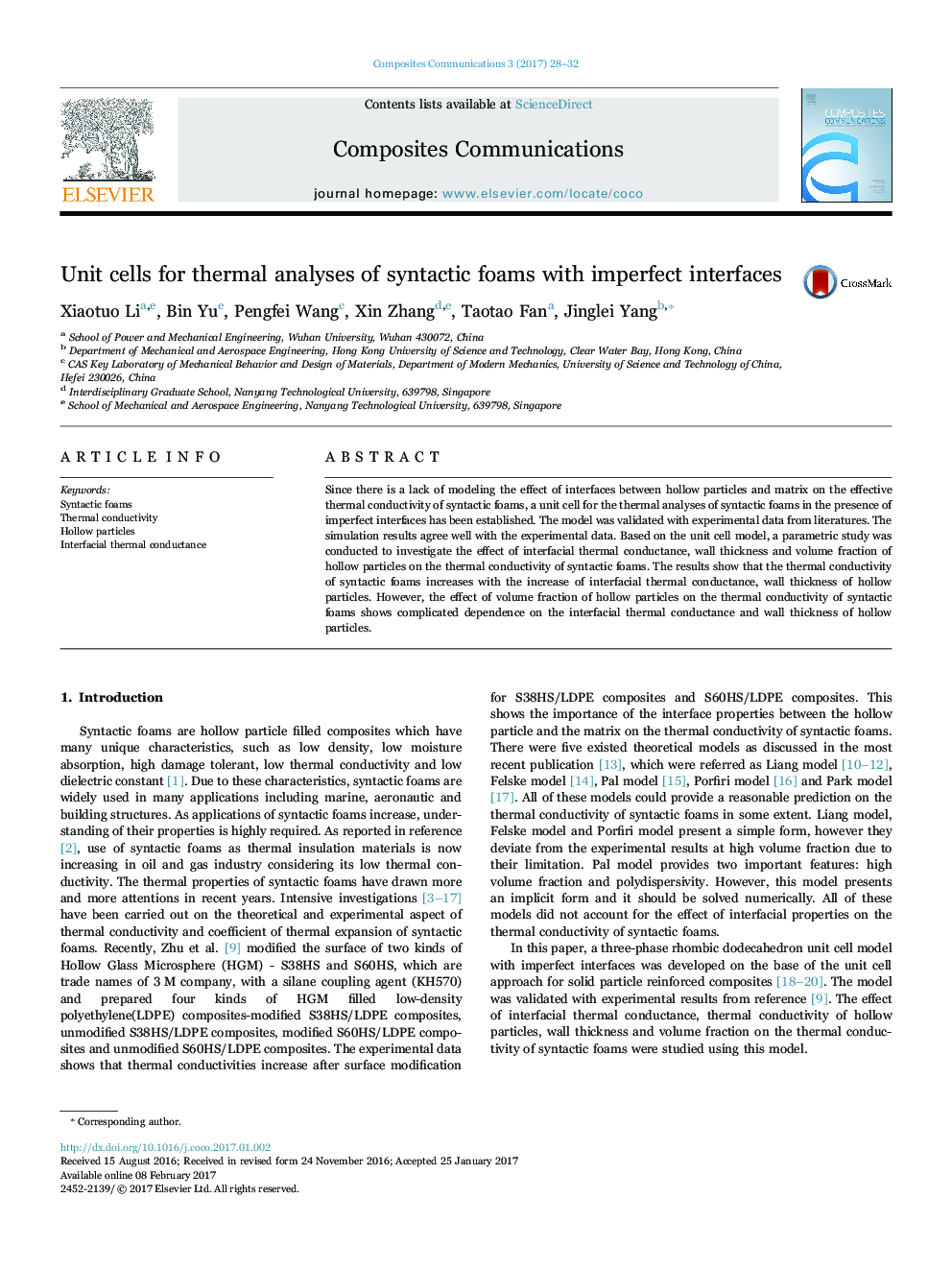| Article ID | Journal | Published Year | Pages | File Type |
|---|---|---|---|---|
| 5432813 | Composites Communications | 2017 | 5 Pages |
â¢A finite element model for the thermal analyses of syntactic foam composites with imperfect interfaces is established.â¢A higher interfacial thermal conductance and a larger wall thickness of hollow particles help to achieve a higher thermal conductivity of syntactic foams.â¢The role of the volume fraction of hollow particles changes with the interfacial thermal conductance and the wall thickness of hollow particles.
Since there is a lack of modeling the effect of interfaces between hollow particles and matrix on the effective thermal conductivity of syntactic foams, a unit cell for the thermal analyses of syntactic foams in the presence of imperfect interfaces has been established. The model was validated with experimental data from literatures. The simulation results agree well with the experimental data. Based on the unit cell model, a parametric study was conducted to investigate the effect of interfacial thermal conductance, wall thickness and volume fraction of hollow particles on the thermal conductivity of syntactic foams. The results show that the thermal conductivity of syntactic foams increases with the increase of interfacial thermal conductance, wall thickness of hollow particles. However, the effect of volume fraction of hollow particles on the thermal conductivity of syntactic foams shows complicated dependence on the interfacial thermal conductance and wall thickness of hollow particles.
